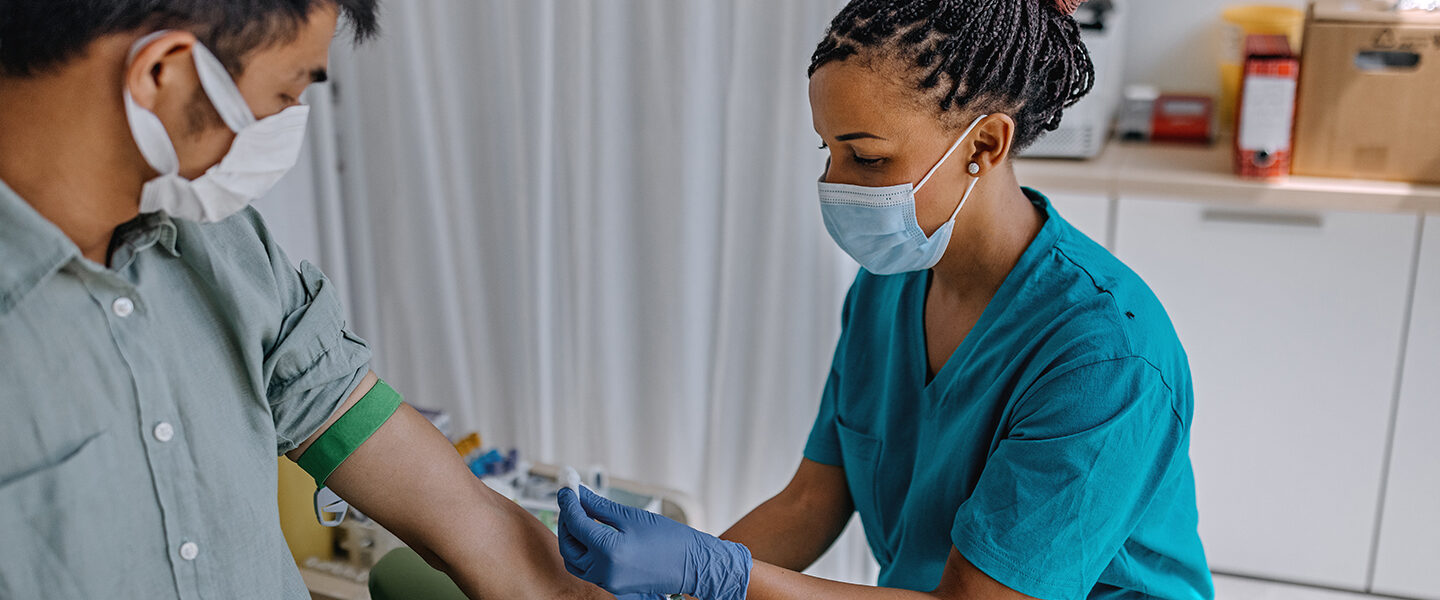Everything about Northeast Medical Institute - New Haven Campus Phlebotomy Course & Cna Class
Everything about Northeast Medical Institute - New Haven Campus Phlebotomy Course & Cna Class
Blog Article
The smart Trick of Northeast Medical Institute - New Haven Campus Phlebotomy Course & Cna Class That Nobody is Discussing
Table of ContentsOur Northeast Medical Institute - New Haven Campus Phlebotomy Course & Cna Class DiariesAll about Northeast Medical Institute - New Haven Campus Phlebotomy Course & Cna ClassNortheast Medical Institute - New Haven Campus Phlebotomy Course & Cna Class Fundamentals ExplainedNortheast Medical Institute - New Haven Campus Phlebotomy Course & Cna Class Fundamentals ExplainedRumored Buzz on Northeast Medical Institute - New Haven Campus Phlebotomy Course & Cna ClassThe Facts About Northeast Medical Institute - New Haven Campus Phlebotomy Course & Cna Class Uncovered
However, using such gadgets need to be gone along with by various other infection prevention and control practices, and training in their usage. Not all safety tools are suitable to phlebotomy. Prior to selecting a safety-engineered device, customers need to extensively explore readily available tools to determine their suitable usage, compatibility with existing phlebotomy techniques, and efficacy in safeguarding team and clients (12, 33).For setups with reduced sources, price is a driving aspect in procurement of safety-engineered tools - Phlebotomy Courses. Where safety-engineered gadgets are not offered, experienced use a needle and syringe serves. Accidental direct exposure and specific information about an occurrence ought to be recorded in a register. Assistance solutions need to be promoted for those that undergo unexpected direct exposure.
Among the important pens of top quality of care in phlebotomy is the participation and teamwork of the individual; this is equally helpful to both the health worker and the client. Clear details either composed or verbal must be readily available per individual who undergoes phlebotomy. Annex F supplies example text for clarifying the blood-sampling procedure to a client. labelling); transport problems; analysis of outcomes for scientific monitoring. In an outpatient division or facility, offer a committed phlebotomy workstation containing: a tidy surface with two chairs (one for the phlebotomist and the various other for the individual); a hand laundry container with soap, running water and paper towels; alcohol hand rub. In the blood-sampling room for an outpatient division or clinic, provide a comfy reclining couch with an arm rest.
Some Ideas on Northeast Medical Institute - New Haven Campus Phlebotomy Course & Cna Class You Need To Know
Ensure that the indications for blood sampling are plainly defined, either in a written method or in documented instructions (e.g. in a laboratory type). Gather all the tools needed for the procedure and location it within risk-free and simple reach on a tray or cart, making sure that all the things are clearly visible.
Introduce on your own to the individual, and ask the patient to mention their complete name. Examine that the laboratory kind matches the individual's identity (i.e. match the patient's details with the laboratory kind, to make sure accurate identification).
Make the client comfortable in a supine setting (if possible). The person has a right to refuse an examination at any type of time before the blood tasting, so it is important to guarantee that the individual has understood the treatment - Phlebotomy Courses.
Northeast Medical Institute - New Haven Campus Phlebotomy Course & Cna Class for Beginners
Prolong the more helpful hints patient's arm and evaluate the antecubital fossa or lower arm. Locate a vein of a great dimension that is noticeable, straight and clear.
DO NOT place the needle where capillaries are diverting, because this boosts the possibility of a haematoma. The blood vessel needs to be visible without applying the tourniquet. Finding the vein will aid in determining the right dimension of needle. Use the tourniquet regarding 45 finger widths above the venepuncture site and re-examine the blood vessel.
Specimens from central lines lug a danger of contamination or erroneous laboratory examination outcomes. It is appropriate, however not suitable, to draw blood samplings when very first presenting an in-dwelling venous tool, prior to attaching the cannula to the intravenous liquids.
What Does Northeast Medical Institute - New Haven Campus Phlebotomy Course & Cna Class Do?
Failure to enable sufficient contact time increases the danger of contamination. DO NOT touch the cleaned site; in particular, DO NOT put a finger over the capillary to assist the shaft of the subjected needle.
Ask the client to form a hand so the blood vessels are a lot more famous. Enter the vein promptly at a 30 level angle or less, and proceed to present the needle along the capillary at the easiest angle of access - PCT Classes. When sufficient blood has actually been accumulated, release the tourniquet prior to withdrawing the needle
Northeast Medical Institute - New Haven Campus Phlebotomy Course & Cna Class Fundamentals Explained
Withdraw the needle carefully and use mild stress to the website with a tidy gauze or completely dry cotton-wool ball. Ask the patient to hold the gauze or cotton woollen in position, with the arm prolonged and elevated. Ask the patient NOT to bend the arm, due to the fact that doing so causes a haematoma.

Our Northeast Medical Institute - New Haven Campus Phlebotomy Course & Cna Class Statements
Where feasible, keep the tubes in a rack and relocate the shelf in the direction of you - https://www.kickstarter.com/profile/northeastmed/about. If the sample tube does not have a rubber stopper, infuse very gradually right into the tube as lessening the stress and velocity utilized to move the sampling decreases the danger of haemolysis.

Report this page